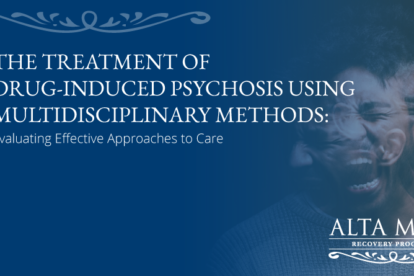
Tramadol Withdrawal
Like other opioid medications used to treat pain, tramadol (Ultram) can cause addiction if it is abused. Defeating tramadol dependency takes time, and the first step in recovery is to undergo medically-supervised detox, which can help men and women who’ve stopped using tramadol manage the powerful withdrawal symptoms that frequently accompany the cessation of opioid use. These withdrawal symptoms have the potential to undermine newfound sobriety, but that contingency can be avoided with detox and follow-up substance use treatment.
Tramadol, which is sold primarily under the brand name Ultram, is one of many opioid medications prescribed for chronic and significant pain. In the United States, the number of prescriptions written for tramadol has risen dramatically, from 22 million in 2008 to more than 40 million today, in part because of fears over the addictive nature of alternative opioid painkillers.
But tramadol is not as benign as many people think. Like all opioids, tramadol can be fiercely addictive if taken in greater quantities or for longer than recommended, with or without a legitimate prescription.
Individuals who abuse tramadol and other opioids recreationally are also at grave risk for addiction, as are those who use borrowed or illicitly obtained tramadol to self-medicate for conditions not officially diagnosed by a physician.
Development of Tramadol Dependency
Tramadol binds with opioid receptors in the brain, and through this action it provides pain relief along with feelings of mild euphoria and deep relaxation. Tramadol also inhibits the brain’s reabsorption of the neurotransmitters norepinephrine and serotonin, which can improve mood and motivation levels. Most drugs that produce this action are used as antidepressants, and other opioid medications do not share tramadol’s complex chemical formula.
Over time and with continuous use, those who take tramadol for moderate-to-severe pain can come to depend on all its effects, including those that relate to emotional management. Changes in the brain leave opioid receptors less sensitive in the presence of tramadol, forcing the person to take larger quantities of the drug to achieve the same mind-altering effects. At the same time, the brain will lose its capacity to synthesize norepinephrine and serotonin in normal amounts, further increasing the need for escalating dosages of tramadol.
Once the brain becomes dependent on tramadol to function, strong cravings and withdrawal symptoms will inevitably accompany attempts to stop using the medication. For this reason, tramadol addiction can only be overcome gradually through continuous tapering of dosages, which will allow the brain to adjust to the drug’s absence at a safe and non-stressful pace.
Tramadol (and Opioid) Withdrawal Symptoms
If a person stops using tramadol abruptly, they will likely experience the onset of physical, emotional, and behavioral withdrawal symptoms within a few hours. Progressive reduction of dosages, or the use of certain medications, can diminish the intensity of these initial symptoms.
But they are still likely to be experienced to some degree within the first three days of recovery.
Early-stage withdrawal signs may include:
- Profuse sweating
- Agitation
- Bursts of anxiety
- Restlessness
- Runny nose
- Muscle aches or cramps
- Racing heartbeat
- Elevated blood pressure
- Shallow breathing
- Sleeplessness
As withdrawal reaches the fourth or fifth day, harsher symptoms associated with late-stage opioid withdrawal may begin to develop. Without medications or a tapering strategy, these side effects of opioid withdrawal can put sobriety at risk.
Signs of late-stage opioid withdrawal may include:
- Loss of appetite
- Chills
- Inability to focus or concentrate
- Nausea, stomach cramps, and vomiting
- Memory problems
- Diarrhea
- Blurred vision
- Throbbing headaches
- Tingling sensations in the extremities
- Confusion and disorientation
- Serious insomnia (and/or sleep disrupted by nightmares)
- Depersonalization (feeling disconnected from mind, body, or environment)
- Strong cravings
The intensity of these symptoms may endure for up to a week after the beginning of detox, but should lessen in severity after that.
However, some people with serious tramadol addictions may experience a condition called PAWS, which stands for post-acute withdrawal syndrome.
With this disorder, withdrawal symptoms may recur or be experienced continuously for weeks. PAWS is particularly associated with the behavioral or psychological symptoms of opioid withdrawal (anxiety, depression, mood swings, continuing insomnia, lack of energy, memory problems, etc.). Intense cravings may be experienced periodically following the onset of post-acute withdrawal, making it absolutely vital that anyone suffering from PAWS continue their rehabilitation and therapy in long-term aftercare programs.
Begin Your Recovery Journey Today
866-922-1350Atypical Tramadol Withdrawal Symptoms
As a consequence of its dual identity, as an opioid and a serotonin-norepinephrine reuptake inhibitor, tramadol can produce anomalous or atypical withdrawal symptoms. These side effects are often disabling and frightening, and clearly require medical intervention when they occur.
Atypical tramadol withdrawal symptoms may include:
- Panic attacks
- Paranoia
- Disorientation
- Dissociation
- Unusual sensory experiences (i.e., feelings of tingling or numbness in the extremities)
- Seizures
- Hallucinations
- Delusions
The latter two symptoms may be signs of psychosis, which can manifest in some individuals recovering from severe tramadol dependency.
Tramadol Detox and Treatment
Tramadol was initially publicized as a safer, less addictive opioid painkiller, with fewer side effects than hydrocodone (Vicodin) or oxycodone (OxyContin). This is unfortunate, because it led to a dramatic increase in prescriptions for a drug that is, in fact, highly addictive, and that produces some intense withdrawal effects that can be even more difficult to manage than those caused by other opioids.
When tramadol dependency has been diagnosed, the only alternative is medically-supervised detox, followed by inpatient or outpatient treatment for opioid addiction at a drug and alcohol rehabilitation center.
Detox services will provide round-the-clock monitoring of all medical conditions, to make sure the patient is completely safe through the perilous initial days of withdrawal. Patients may be prescribed medications during detox, including:
- Lofexidine. The only non-opioid medication approved to treat opioid withdrawal, lofexidine (Lucemyra) can alleviate the severity of withdrawal symptoms, making them easier to bear.
- Buprenorphine. Sold under the brand name Suboxone, buprenorphine binds with opioid receptors in place of tramadol, but without causing the latter’s strong intoxicating effects.
- Naltrexone. This medication may be provided during outpatient detox or after inpatient detox ends. Naltrexone (Vivitrol) reduces the risk of relapse by nullifying the capacity of opioids to cause euphoria.
Beginning in detox, patients will slowly taper their dosages of tramadol (or buprenorphine, if it is administered as a replacement), with total sobriety being the ultimate goal.
Once the seven-to-10-day detox program is complete, treatment and aftercare programs are the next steps in the recovery process, and both are necessary to prevent relapse and to help the patient cope with the personal circumstances or life situations that made them vulnerable to drug abuse in the first place. Treatment for tramadol addiction is usually successful, as long as the commitment to recovery is sincere and the efforts to remain sober are sustained.






